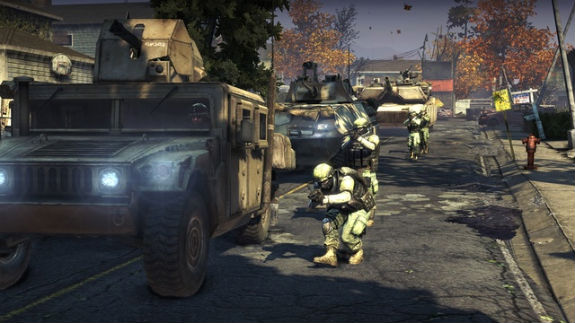The game industry is brutally competitive. There’s a lot of money to be made, for sure, but for a small developer to get their share of that money can be a big challenge. Kaos Studios originally entered gaming with the Desert Combat mod for Battlefield 1942, and later made their first full game in Frontlines Fuel of War, a moderately successful shooter. However they got into the big time with 2011’s Homefront, a story-driven shooter set in a future where America had been conquered by Korea and players had to join a rag-tag rebellion that fought against an occupying force on American soil. What was their reward for creating this opus of speculative fiction? They went out of business a few months after Homefront was released.
This seemed unlikely during the months leading up to launch. The unusual story got a good deal of buzz from the press, including us here at Player Affinity. Finally, a shooter where, instead of guiding a soldier through the same tired old Middle Eastern nations, players took on the role of guerilla fighters trying to overthrow oppressors in a war-ravaged America. Much ado was made about the fact that the story was written by John Milius who also wrote Red Dawn.
With so much going for it THQ had very high hopes. But players and critics were disappointed that this second American Revolution only took a few hours to complete. After a mere four or five hours it was over and those pesky foreigners were thwarted.
USA! USA! USA!
While that’s great for the fictional freedom fighters in the game, it wasn’t so for the developer. Plenty of copies of Homefront were swiftly beaten, then traded in for games that took more than an evening to complete.
The short single-player wouldn’t be such a problem if there had been a more extensive multiplayer mode. To its credit, Homefront does have a competent, vehicle-based multiplayer game, which is a lot like Kaos Studios’ other title, Frontlines, Fuel of War for those familiar with that franchise. Homefront also has a couple of unique features to help distinguish it from the crowd.
Players earn battle points for capturing strategic points on the battlefield, and can use these points to buy upgrades in the middle of a match, including things like tanks or helicopters.
Sadly for Kaos, the shooter genre is horribly overcrowded and every new game is essentially in a battle for third place behind Call of Duty and Battlefield. It’s story and multiplayer weren’t enough to make the game meet the publisher expectations.
But those who still find the basic premise of Homeland to be interesting still have hope. Although the original developer is gone, the Intellectual Property rights to Homefront still belong to THQ who have confirmed that a sequel will be made by developer Crytek, scheduled for 2014.
Homeland might be yet another example of the industry punishing developers who try something new. But the real lesson could be that when creating a new Intellectual Property, developers have to give players the time to explore their new world, rather than offering a quick campaign followed by more of the same multiplayer.